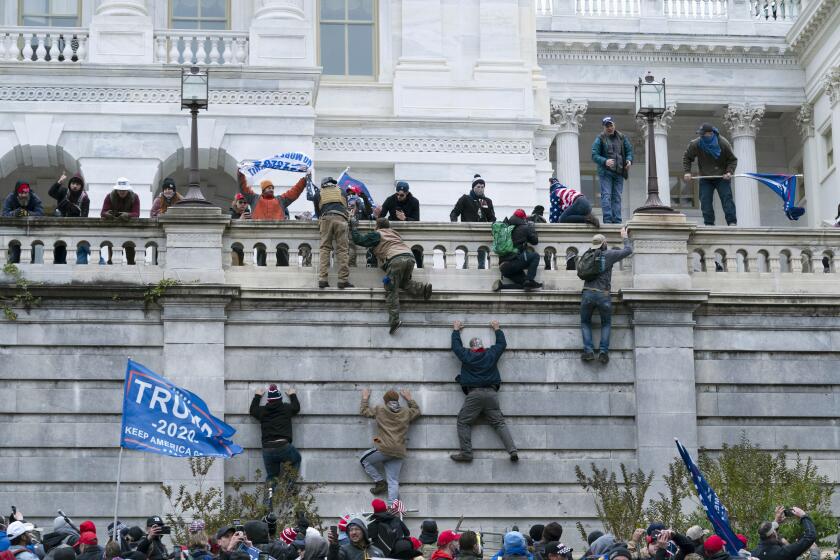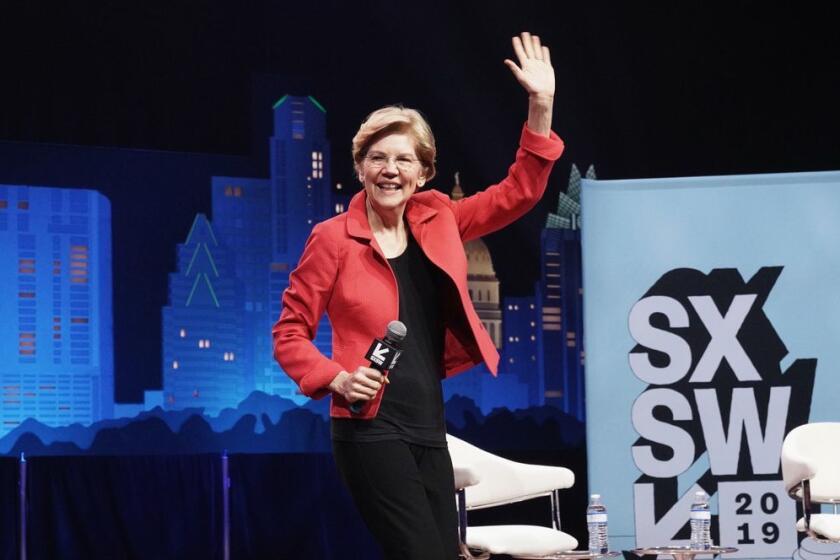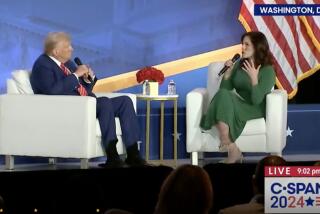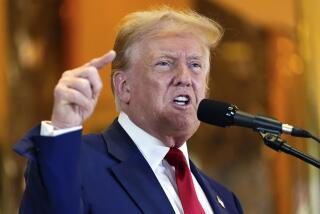Column: Did tech companies go too far in banning President Trump? The answer is no
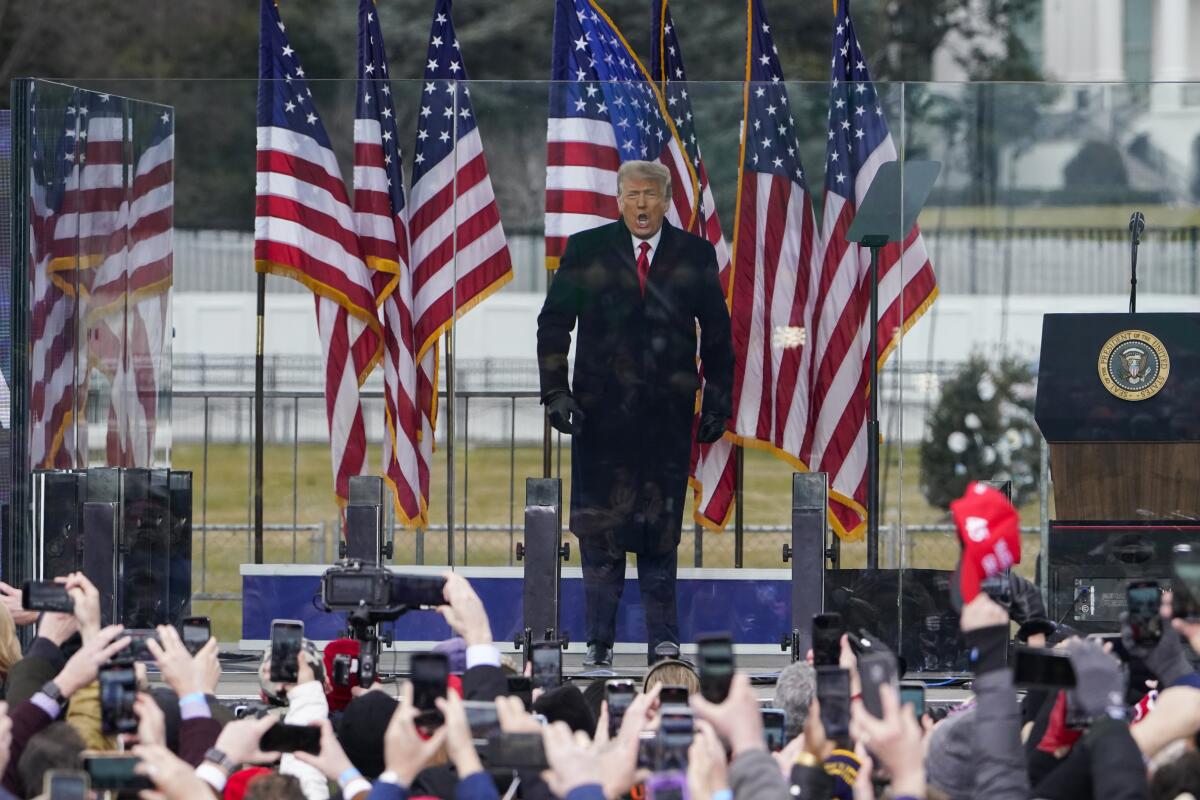
- Share via
For the better part of four years, people have wondered what it would take for President Trump to be banned from Twitter, his favorite social media platform for announcing policy — but also for spewing lies, vulgarity and hate.
Now we know. In permanently suspending Trump’s @realDonaldTrump account Friday, Twitter cited his incitement of the violent mob that attacked the U.S. Capitol on Wednesday, as well as “the risk of further incitement of violence.”
The platform’s action, coming as it did at the very tail end of Trump’s presidency during which Twitter granted him a unique level of indulgence, is sure to provoke a broad debate over the power of private social media firms to act as arbiters of public discourse.
Public pressure to get private companies to exclude speech meant to bring down American democracy is not censorship. It is patriotism.
— Richard L. Hasen, UC Irvine
Trump himself engaged that debate in recent months, demanding a repeal or at least narrowing of Section 230 of the 1996 Communications Decency Act. That’s the statute that affords interactive internet services immunity from legal liability for almost anything their users post online, but also affords them the right to moderate that content as they wish.
Some users, especially conservatives, have decried moderation, suspensions or bans of their content by Twitter, Facebook and other platforms as “censorship.” That notion promptly started making its way among Trump supporters after Twitter’s announcement.
“Disgusting,” tweeted former Trump aide Jason Miller. “Big Tech wants to cancel all 75M @realDonaldTrump supporters. If you don’t think they’re coming for you next, you’re wrong.” Others, including Donald Trump Jr., suggested that Twitter was trampling on his father’s constitutional right to free speech, as if it was violating the 1st Amendment.
We can dispense with Junior’s point easily: Twitter is not subject to the 1st Amendment, which bars only government entities from infringing on free speech.
“Facebook, Twitter, the other social media platforms are not the government,” civil rights expert Nadine Strossen observes. “They are private sector entities, and therefore they have no 1st Amendment obligation to protect your freedom of speech.”
Still, as Miller’s tweet hinted, that theme may well turbocharge the emerging conflict between conservatives and Silicon Valley, the home of most major social media firms.
Jumping off the sinking S.S. Trump isn’t an action worthy of praise.
Facebook and Google’s YouTube, as well as Twitter and other technology firms, have recently started trying to reckon with the power they have over public discourse and how it has been used and misused by political actors and social movements, particularly on the fringe.
YouTube began tweaking its recommendation algorithm in 2019 to reduce ”recommendations of borderline content and content that could misinform users in harmful ways,” apparently with some success.
Facebook has said it is instituting a content moderation process via an oversight board, though its efforts to quell hate speech have been unavailing in the recent past. In the aftermath of Wednesday’s violence, Facebook banned Trump’s account from posting for at least the remainder of his term in office and perhaps “indefinitely,” its chairman Mark Zuckerberg said Thursday.
These companies may be responding to rising public discontent with their role in society that already has led to calls from across the partisan spectrum to break them up. The threat of such regulation, however, typically has been aimed at their economic rather than political footprints.
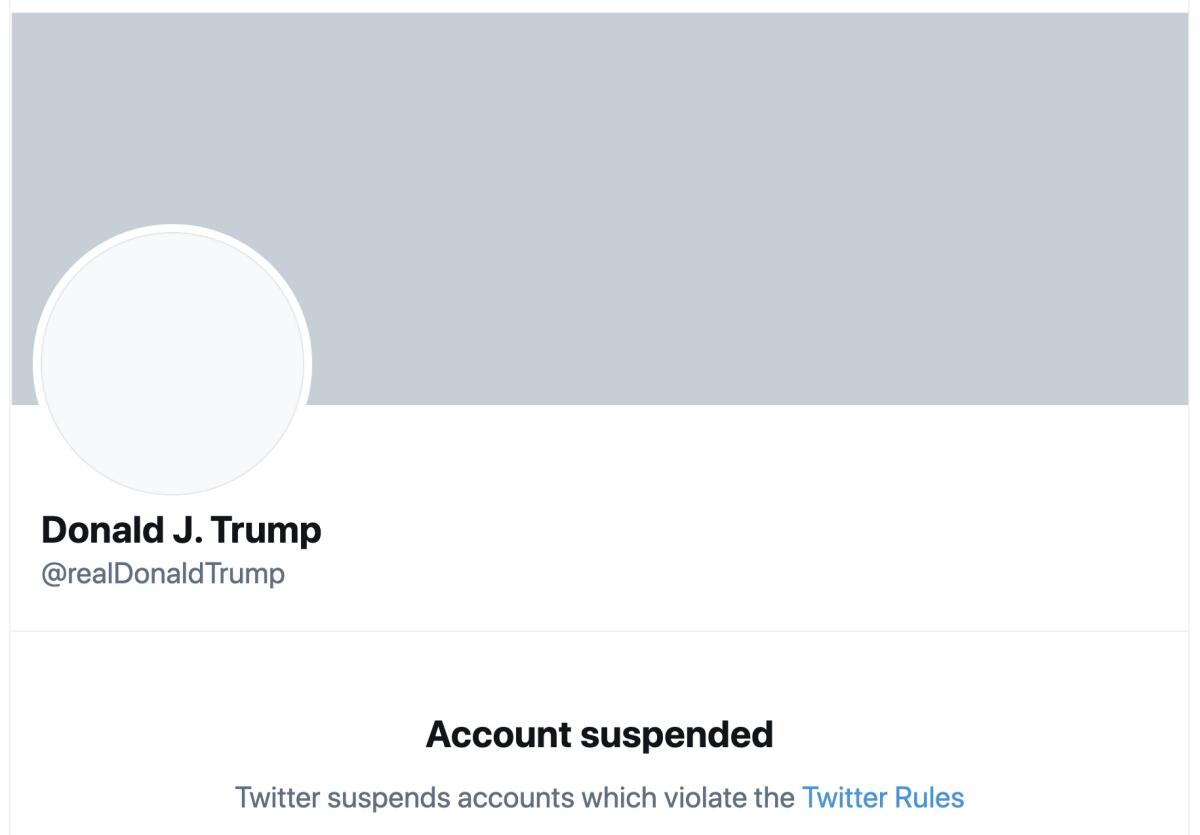
In announcing her proposal to break up Amazon, Google and Facebook in 2019, Sen. Elizabeth Warren (D-Mass.) emphasized that “they’ve bulldozed competition, used our private information for profit, and tilted the playing field against everyone else. And in the process, they have hurt small businesses and stifled innovation.”
But it’s also evident that Wednesday’s insurrection made the firms, their users and the general public more sensitive to the fragility of public and social norms and the ability to misuse their features for social and political disruption.
In that context, actions taken by Twitter and Facebook to stifle Trump’s ability to exploit their platforms are responsible in light of the moment, and they come with considerable public support. “Public pressure to get private companies to exclude speech meant to bring down American democracy is not censorship,” Richard L. Hasen, the election law expert at UC Irvine, tweeted Friday. “It is patriotism.”
Yet we should be careful not to exaggerate the power that Twitter and its cousins wield over public discourse — or at least we should try to understand better the nature of what power they do have.
At the most fundamental level, Twitter and Facebook don’t have the power to “silence” Trump. He still has plenty of opportunity to reach out to a vast audience: he could give speeches, host press conferences, email statements, post messages on his website or schedule TV spots via indulgent platforms such as Fox News. As president, he has had more access to the public than anyone else in the world, since his every word is widely disseminated as news.
The spectacle of insurrectionists inside the U.S. Capitol has provoked many supporters of President Trump suddenly to deem themselves ex-supporters. But it’s not only Republican politicians — it’s Big Business.
That makes the president a unique social media user, so we should be wary of drawing broad conclusions from Twitter’s action in the Trump case. Let’s start by examining his relationship with the platform.
Trump launched his Twitter account on May 4, 2009, with a tweet promoting a forthcoming appearance on the David Letterman show. At the time, Trump projected his public persona mostly on television, through his NBC reality show “The Apprentice,” which started in 2004, and appearances on Larry King’s program and other shows on cable channels.
His Twitter usage ramped up quickly as he discovered the platform’s effectiveness for unfiltered communication to a follower base that eventually grew to almost 89 million users (though it’s uncertain how many of those followers were actually human).
Trump’s ubiquitous presence on Twitter can lead one to think that the platform was a critical factor in his emergence as a political player, but that’s wrong.
Throughout the 2016 presidential campaign, Trump’s public outreach always depended more on broadcast and cable TV, which gave him and his rallies more unfiltered airtime than his rival candidates, largely for his entertainment value.
That this was a dereliction of responsibility by TV executives is indisputable. They were addicted to the audience statistics Trump generated, and they knew it.
Les Moonves, then the chief executive of CBS, even boasted about it in 2016. “It may not be good for America, but it’s damn good for CBS,” he sniggered at a media industry conference. “The money’s rolling in .... It’s a terrible thing to say, but bring it on, Donald, go ahead. .... For us, economically, Donald’s place in this election is a good thing.”
Once he became president, Trump exploited Twitter as a core communications tool. That posed problems for Twitter because of his exploding of the norms of presidential discourse — in fact, social discourse.
There’s no question that he wielded Twitter as a powerful weapon. A Trump tweet could drive down the stock of a public company, as happened to Boeing in late 2016 when then-President-elect Trump tweeted a threat to cancel an order for a new Air Force One from the company. Republican officeholders lived in fear of being targeted by a Trump tweet, which could energize a primary challenge from the right.
Twitter struggled with the issue, but its management ruled that, despite his violations of Twitter standards in ways that prompted suspensions and bans of many an ordinary user, his tweets were “newsworthy and of public interest” and therefore he was exempt from those standards.
Twitter wasn’t necessarily being unreasonable. Trump was the president, after all, and his tweets were inherently newsworthy. Mainstream news organizations faced the same conundrum with Trump’s public statements, which bore no resemblance to the style or content of presidential utterances of the past. Not until well into his term did major newspapers feel comfortable labeling his lies as, well, “lies.”
Twitter’s curtailing of Trump’s account ramped up gradually. The platform placed labels casting doubt on Trump tweets lying about the COVID-19 pandemic and the November election results. But even insiders considered that too tolerant.
“That policy, as applied, has worked to protect, even indulge, public officials who repeatedly violate a company’s speech policy,” Danielle Citron, a free speech expert at Boston University who serves on Twitter’s Trust and Safety Council. “There were no strikes too many for Trump.” Following the storming of the Capitol on Wednesday, Citron wrote that Trump’s “presence on the site is no longer tenable.”
It’s difficult to identify all the factors that led Twitter to ban Trump outright. That’s because several interrelated factors have come together at this moment.
Twitter might think that it’s finally safe to goad Trump without facing his backlash because his presidential term is ending, and with it his ability to wield government power against his adversaries, real or perceived.
Then there’s the insurrection, its aftermath, and the potential for a repetition. Twitter focused on those factors in its explanation of the ban. It cited two Trump tweets issued Friday: One warned that “the 75,000,000 great American Patriots who voted for me...will not be disrespected or treated unfairly in any way, shape or form!!!” The second announced that he would not be attending the Jan. 20 presidential inauguration of Joe Biden.
The two tweets, taken together, “could inspire others to replicate violent acts and...were highly likely to encourage and inspire people to replicate the criminal acts” of this past week, Twitter said. “There are multiple indicators that they are being received and understood as encouragement to do so.”
The same calculations appear to be going through the heads of Republican officeholders who have sycophantically served Trump up to now. Perhaps perceiving both that Trump has become a paper tiger and that his incitement of violence is irretrievably beyond the pale, they’ve begun to speak out. But their Damascene conversions have come late.
What lessons Twitter will draw from Wednesday’s events are murky. The company has had rules of user conduct in place for years; although they seem stringent and stern at first glance, some leave a lot of room for interpretation and users have long complained that they’re applied inconsistently.
It’s possible that we have reached an inflection point that will lead to a reexamination of the rights, responsibilities and power of social media. It’s hard to detect inflection points in advance, easier to recognize them when they arrive.
The social media platforms have struggled with how far to go to rein in political speech, which should be protected. That wasn’t the issue here. Trump went far beyond political speech by inciting a riot, and they were right in sending him packing.
More to Read
Inside the business of entertainment
The Wide Shot brings you news, analysis and insights on everything from streaming wars to production — and what it all means for the future.
You may occasionally receive promotional content from the Los Angeles Times.

